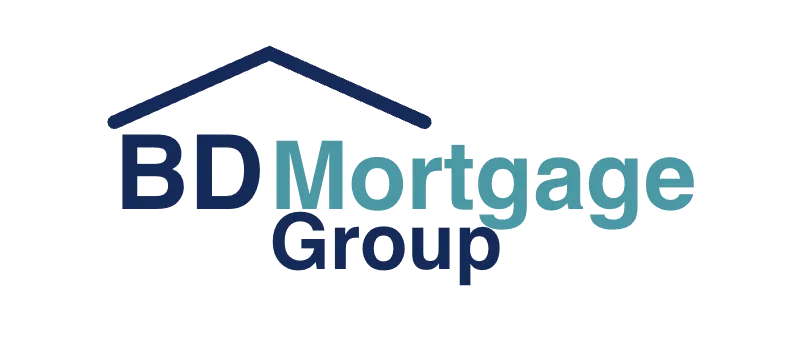ATTENTION: Homebuyers
Understanding Construction-to-Permanent Loan Requirements and Options
Learn about construction-to-permanent loans, their requirements, and available options to finance your dream home efficiently.
Understanding Construction-to-Permanent Loan Requirements and Options
Building your dream home is an exciting endeavor, and understanding the financing options available is crucial. A construction-to-permanent loan simplifies the process by combining construction financing and a permanent mortgage into a single loan. This guide will walk you through the requirements, process, and options for construction-to-permanent loans.
Construction-to-Permanent Loan Requirements
To qualify for a construction-to-permanent loan, lenders typically assess the following:
Credit Score: A minimum credit score of 620 is often required, though higher scores may improve approval chances and loan terms.
Down Payment: Down payments usually range from 10% to 20% of the loan amount, depending on the lender and loan type.
Debt-to-Income Ratio (DTI): Lenders prefer a DTI ratio below 43%, ensuring you can manage loan payments alongside existing debts.
Construction Plans and Builder Approval: Detailed construction plans and a contract with a licensed builder are necessary. The builder must be approved by the lender to ensure they meet specific standards.
Financial Stability: Proof of stable income and employment is required to demonstrate your ability to repay the loan.
Understanding Construction-to-Permanent Loan Rates
Interest rates for construction-to-permanent loans are generally higher than traditional mortgages due to the increased risk during construction. However, locking in a rate at the beginning of the construction phase can protect you from market fluctuations. It's advisable to compare offers from multiple lenders to secure the most favorable terms.
The Construction-to-Permanent Loan Process Explained
Application and Approval: Submit your financial documents, construction plans, and builder information to the lender for approval.
Construction Phase: During construction, funds are disbursed in stages, known as "draws," as each phase of construction is completed. You'll typically make interest-only payments during this period.
Conversion to Permanent Loan: Once construction is complete and all inspections are passed, the loan converts into a permanent mortgage, and regular principal and interest payments begin.
Choosing the Right Construction-to-Permanent Loan Lenders
Selecting a lender experienced in construction-to-permanent loans is crucial. Consider the following factors:
Experience with Construction Loans:
Lenders familiar with the complexities of construction financing can provide valuable guidance.
Competitive Rates and Terms:
Compare interest rates, fees, and loan terms from multiple lenders to find the best deal.
Customer Service:
Responsive and knowledgeable customer service can ease the loan process and address any concerns promptly. Click here to see if you qualify.
Construction-to-Permanent Loan Down Payment Considerations
The required down payment varies based on the loan type and lender policies:
Conventional Loans:
Typically require a down payment of 20%, though some programs may offer lower options.
FHA Loans:
May allow down payments as low as 3.5% for qualified borrowers.
VA and USDA Loans:
Often offer no down payment options for eligible borrowers.
A higher down payment can reduce your loan amount and monthly payments, and may also improve your loan terms.
Credit Score Requirements for Construction-to-Permanent Loans
A higher credit score not only increases the likelihood of loan approval but can also secure more favorable interest rates. It's beneficial to review your credit report and address any discrepancies before applying.
Credit Score Requirements for Construction-to-Permanent Loans
Utilizing a loan calculator can help you estimate monthly payments, total interest, and the overall loan amount. Input different scenarios to understand how changes in interest rates, loan terms, or down payments affect your payments.
Construction-to-Permanent Loan Guidelines
Lenders have specific guidelines, including:
Loan-to-Value Ratio (LTV):Typically, lenders require an LTV ratio of 80% or lower, meaning your loan amount should not exceed 80% of the property's appraised value.
Construction Timeline: Construction is generally expected to be completed within 12 months.
Occupancy: The property is usually required to be your primary residence.
Adhering to these guidelines is essential for loan approval and successful project completion.
Benefits of Construction-to-Permanent Loans
Single Closing: Reduces closing costs and simplifies the financing process.
Interest-Only Payments During Construction: Eases financial burden during the building phase.
Locked-In Interest Rates: Protects against market fluctuations during construction.
Streamlined Process: Combines construction and permanent financing into one loan, reducing paperwork and complexity.
Exploring Construction-to-Permanent Loan Options
Various loan programs cater to different needs:
Conventional Loans: Offered by private lenders with varying terms.
FHA Loans: Government-backed loans with more lenient credit and down payment requirements.
VA Loans: For eligible veterans and service members, often with favorable terms and no down payment.
USDA Loans: For rural property construction, offering low or no down payment options.
Evaluate each option to determine which aligns best with your financial situation and homebuilding goals.
Conclusion
Embarking on building your dream home is a significant endeavor, and understanding construction-to-permanent loans can simplify the financing process. By familiarizing yourself with the requirements, rates, and available options, you can make informed decisions that align with your financial goals. Consult with experienced lenders to explore the best loan programs for your unique situation, and take the first step toward turning your dream home into a reality.
CHECK YOUR ELIGIBILITY TODAY BY COMPLETING THE FORM BELOW
No credit terms or conditions are advertised on this page. Information is educational only and subject to change without notice. Eligibility, documentation, and underwriting outcomes vary by applicant. Contact BD Mortgage Group at 727-761-6111 for personalized guidance.
COMPANY
CUSTOMER CARE
RESOURSES
LEGAL

© Copyright 2025. BD Mortgage Group. All Rights Reserved.